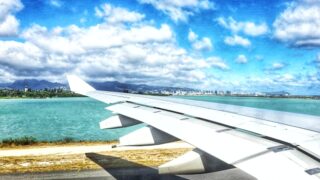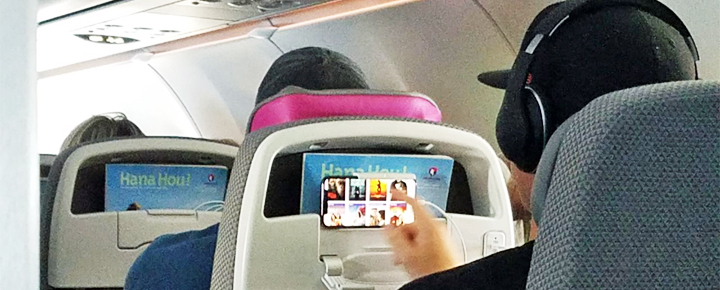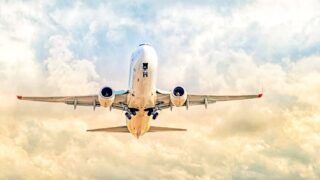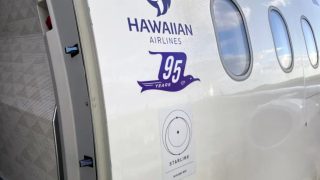Traveling to Hawaii is about to become much more convenient, which some of you will love, and others, well, not so much. It all depends on how connected you like to be across the Pacific. About half of all flights between the U.S. mainland and Hawaii will soon offer passengers free, high-speed Wi-Fi.
This new development announced by United Airlines adds SpaceX’s Starlink satellite service to its flights. Currently, Hawaiian Airlines is the first U.S. carrier to offer this service. It will significantly improve the in-flight experience for most travelers heading to the islands, making long-haul flights more productive and enjoyable.
United and Hawaiian Airlines are leading the way to Hawaii.
United Airlines has partnered with SpaceX’s Starlink to equip over 1,000 aircraft with free, high-speed Wi-Fi. Testing of the Starlink service will begin early next year, and the service rollout is expected to start by the end of 2025.
This move comes after much anticipation about whether United would follow Hawaiian Airlines in adopting Starlink for its flights, which we wrote about recently. Also, check out our in-depth review of Hawaiian Airlines’ Starlink Wi-Fi here.
United currently accounts for nearly 25% of the seat capacity between the U.S. mainland and Hawaii. With Starlink, United plans to provide internet fast enough to support streaming services, online shopping, and real-time work applications. Passengers will also be able to connect multiple devices simultaneously and no longer endure the slow speeds and non-existent or unreliable service that have plagued current Hawaii in-flight WiFi systems.
Hawaiian Airlines’ early adoption of Starlink.
Hawaiian Airlines was the first U.S. airline to adopt Starlink’s satellite internet service, and it’s already offering passengers free, high-speed Wi-Fi on flights between the U.S. mainland and Hawaii. It has rolled out the WiFi on all of its narrow-body A321 planes and is completing the deployment across its wide-body A330 aircraft. Also holding nearly a quarter of the entire industry seat capacity on these routes, Hawaiian Airlines has received strong feedback from passengers enjoying improved in-flight connectivity across such a significant number of flights.
The combined impact on Hawaii flights.
United and Hawaiian Airlines account for nearly 50% of all flights between the U.S. mainland and Hawaii. With their adoption of Starlink, most travelers on these routes will soon have access to free, high-speed internet, which will set a new standard for in-flight amenities.
What this means for Hawaii travelers.
Starlink provides a significant improvement for passengers, especially on long-haul flights:
Stay connected: Passengers can easily stay in touch and share their Hawaii journey in real-time, from getting on board to deplaning.
Productivity not previously available: For those of us who work flying between the mainland and Hawaii, we can now do so remotely, much like at home, check emails, and even participate in virtual meetings as we recently did en route between Honolulu and Papeete, largely without worrying about Wi-Fi issues.
Max entertainment: With the ability to stream movies, music, and TV shows of your choice, passengers will no longer need to rely on pre-downloaded content or the constraints of airlines’ in-flight entertainment systems. Although having said that, the United entertainment system is extremely robust in content.
Positive impact on Hawaii tourism.
For many, this improved connectivity will make travel to Hawaii more appealing. Visitors can plan their Hawaii vacation activities, make reservations, and check local events during their flight to the islands. For business travelers, we value working seamlessly in a new way while in the air.
Currently, in-flight Wi-Fi to and from Hawaii is often unreliable or completely unavailable. When available, it often requires payment for just okay service, as many travelers on United, American, Delta, and Southwest flights have experienced. However, with the introduction of Starlink, which is free, everything will change.
Starlink operates a constellation of over 6,300 low-Earth orbit satellites, providing global coverage. This technology offers high-speed, low-latency internet access, which is ideal for real-time communication and streaming. Starlink’s network is particularly advantageous on long-haul flights over the Pacific Ocean, where traditional in-flight Wi-Fi services tend to struggle.
Starlink satellite internet and Amazon.
The Starlink internet constellation uses thousands of low-Earth satellites. This contrasts with traditional satellite systems, which rely on fewer larger satellites in higher orbits to offer faster, more reliable service—especially in remote areas like across the Pacific. This makes it ideal for long-haul flights in places where internet coverage has historically been weak.
Looking ahead, Amazon’s upcoming Project Kuiper satellite system is set to rival Starlink. The competition between Starlink and Amazon Kuiper promises even better connectivity for travelers.
Impact on the airline industry: competitive pressure is on.
Airlines like American, Delta (which had looked at Starlink), and Southwest may feel pressure to enhance their in-flight Wi-Fi offerings to remain competitive on Hawaii routes. It isn’t clear whether Alaska, as the potential owner of Hawaiian Airlines, would also take this same route in the future.
The adoption of Starlink by United and Hawaiian will raise passenger expectations significantly, pushing other airlines to follow suit or risk losing market share. In-flight services like this have become crucial to travelers’ decision-making, requiring airlines to offer better amenities to achieve a competitive edge.
With nearly half of all flights between the U.S. mainland and Hawaii soon offering this in-demand feature, passengers can look forward to more connected, convenient, and enjoyable flights to the islands. This development elevates the in-flight experience and sets a new standard that will drive industry-wide changes, benefiting all travelers.
Are you looking forward to this better level of connectivity across the Pacific?
Get Breaking Hawaii Travel News






With a fleet of 972 aircraft it will be a few Years until the whole fleet is equipped. Remains to be seen how UA will prioritize the specific aircraft type of installation. I wonder how {obnoxious} UA’s new IFE system will be as far as frequent/intrusive advertising in a supposedly ‘free’ internet service.